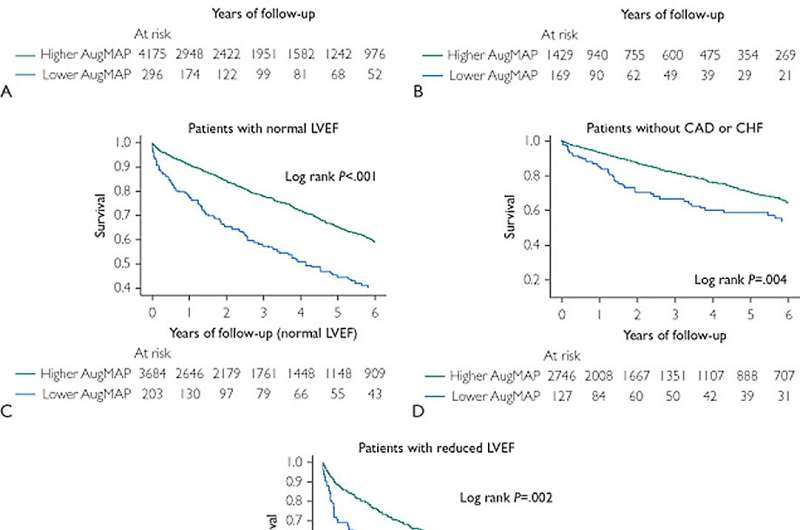This article has been reviewed according to Science X's editorial process and policies. Editors have highlighted the following attributes while ensuring the content's credibility:
fact-checked
peer-reviewed publication
trusted source
proofread
Researchers develop calculation to identify high-risk moderate aortic stenosis patients

Mayo Clinic researchers have developed a calculation that can help identify moderate aortic stenosis patients at higher risk of dying from the condition. According to new research published in Mayo Clinic Proceedings, calculating the patient's mean arterial pressure (AugMAP) is a simple and effective way to identify those patients who may benefit from more aggressive treatment strategies.
"Physiologically, AugMAP can be considered a marker of global left ventricular contractile function," says Chieh-Ju Chao, M.D., senior associate consultant in the Mayo Clinic Department of Cardiovascular Medicine and the study's first author. "AugMAP is easily calculated from the patient's blood pressure and mean aortic gradient, and we found that low AugMAP is associated with higher mortality in all moderate aortic stenosis patient subgroups."
Aortic stenosis is one of the most common cardiac valvular abnormalities, affecting about 5% of people older than 65 years. For most patients with moderate aortic stenosis, clinical guidelines call only for periodic monitoring with echocardiography, a test that uses sound waves to show how blood moves through the heart. However, growing evidence shows that patients with moderate aortic stenosis have poor longer-term survival rates and could benefit from earlier intervention.
The study looked at 4,563 patients with moderate aortic stenosis who were treated at Mayo Clinic from January 2010 through December 2020. The findings indicate that AugMAP is a better prognostic tool compared to other available measures and can detect early-stage left ventricular dysfunction before a decrease in left ventricular ejection fraction is observed. "With this information, we can identify patients at higher risk of mortality with current management strategies and initiate discussion about other treatment strategies," says Dr. Chao.
"Moderate aortic stenosis does carry a higher risk of morbidity and mortality compared to the general population based on several prior studies," says senior author Reza Arsanjani, M.D., a Mayo Clinic cardiologist. "Current guidelines recommend active surveillance although earlier intervention might benefit select patients. Our study could potentially identify high-risk individuals who might benefit from earlier intervention."
The authors say future studies should consider whether patients with lower AugMAP can benefit from earlier intervention rather than periodic monitoring.
More information: Chieh-Ju Chao et al, Using Augmented Mean Arterial Pressure to Identify High Mortality Risk Patients With Moderate Aortic Stenosis, Mayo Clinic Proceedings (2023). DOI: 10.1016/j.mayocp.2023.02.028




















